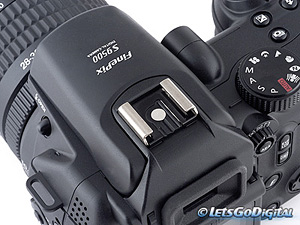 |
 |
 |
 Travel & Outdoors | June 2006 Travel & Outdoors | June 2006  
Shutter Lag
 William M. Bulkeley - Wall Street Journal William M. Bulkeley - Wall Street Journal


| | "When setting up a shot with people, I'd press the button to take the photo and then tell people to smile." |
Glenn Maxwell vividly recalls the only whale-watching cruise he ever took, two years ago off Puerto Vallarta. As waves rocked the boat, he says, scores of the giant mammals leapt clear of the water.

Alas, Maxwell's memories of his Mexican adventure are better than his snapshots. Knowing a photo opportunity when he saw one, the Detroit computer programmer took dozens of pictures with his $500 Olympus digital camera. But each time he pressed the button, the camera paused, the whale flopped back in the ocean, and, Maxwell says, "I only got sky or sea."

Maxwell was the victim of "shutter lag" - a maddening hesitation between the moment the button is pushed to take a picture and the time the picture is actually taken. Rarely an issue with traditional film photography, shutter lag is notorious among the 75 million owners of digital cameras, which use filmless imaging technology.

Digital photography is fast eradicating film. Consumers have embraced digital cameras because they eliminate the cost of film, they permit photographers immediately to review their pictures and retake bad ones, and they make it easy to store pictures on PCs, e-mail them to friends and print them at home.

But most digital cameras still don't provide what every film camera does - the ability to time a shot by pressing the button at the moment the baby smiles or the Little Leaguer hits the ball.

Camera makers didn't want to take the snap out of snapshots when they developed digital cameras. But to hold down costs, they needed to make the semiconductor that captures the image do a lot of preparatory work, calculating light levels and focal distance. Film can adjust to a wide variety of light levels; digital sensors need to carefully preset themselves or the image will be washed out or dim.

In the age of film, when the button was pressed, the picture was captured in an instant. In the vast majority of digital cameras, there's a delay that can last as long as two seconds.

To some users, it's another example of how advanced-technology products often lack important virtues of their predecessors. Cell phones often crackle with static that Ma Bell eliminated in rotary phones many years ago; computer printers need endless adjusting before they can print an address on an envelope - a task that typewriters took in stride.

"I think we've really gone backwards on these technologies," complains Marcia Gregg, a mother of two from Boston who has a digital camera but still fondly recalls her Pentax from the 1980s that "was instantaneous."

Camera makers say they have made digital shutter lag a lot shorter on their newest cameras, especially higher-priced models. "Shutter lag has been reduced dramatically," says Darin Pepple, marketing manager for Fuji Photo Film Co.'s Fujifilm USA.

Rich Pelkowski, product manager for digital cameras for Olympus Corp.'s Olympus USA, says that Olympus, like other camera makers, has improved the speed of cameras considerably in the past three years. Lag has dropped to 0.7 to 1.5 seconds from 2 to 2.5 seconds when Maxwell bought his camera.

Jerry Magee, product manager for digital capture at Eastman Kodak Co., says that photographers should prefocus by clicking the button halfway down. With new models that have a "burst" mode that shoots three or four shots in two seconds, photographers have a better chance of capturing the right picture.

Single-lens-reflex digitals pioneered by Canon and Nikon last year have separate sensors for their automatic focus, greatly reducing shutter-speed problems, many users say. These cameras sell for about $800. Professional cameras, some going for about $4,000, employ multiple sensors and advanced software that reduces delay. But features like these are out of reach for the average buyer, who spends $300, according to the Photo Marketing Association International.

Camera users often resort to other techniques. Boston's Jennifer Lowe says that during an African tour, she learned to anticipate where an animal was about to move. And "when setting up a shot with people, I'd press the button to take the photo and then tell people to smile." | 
 | |
 |



